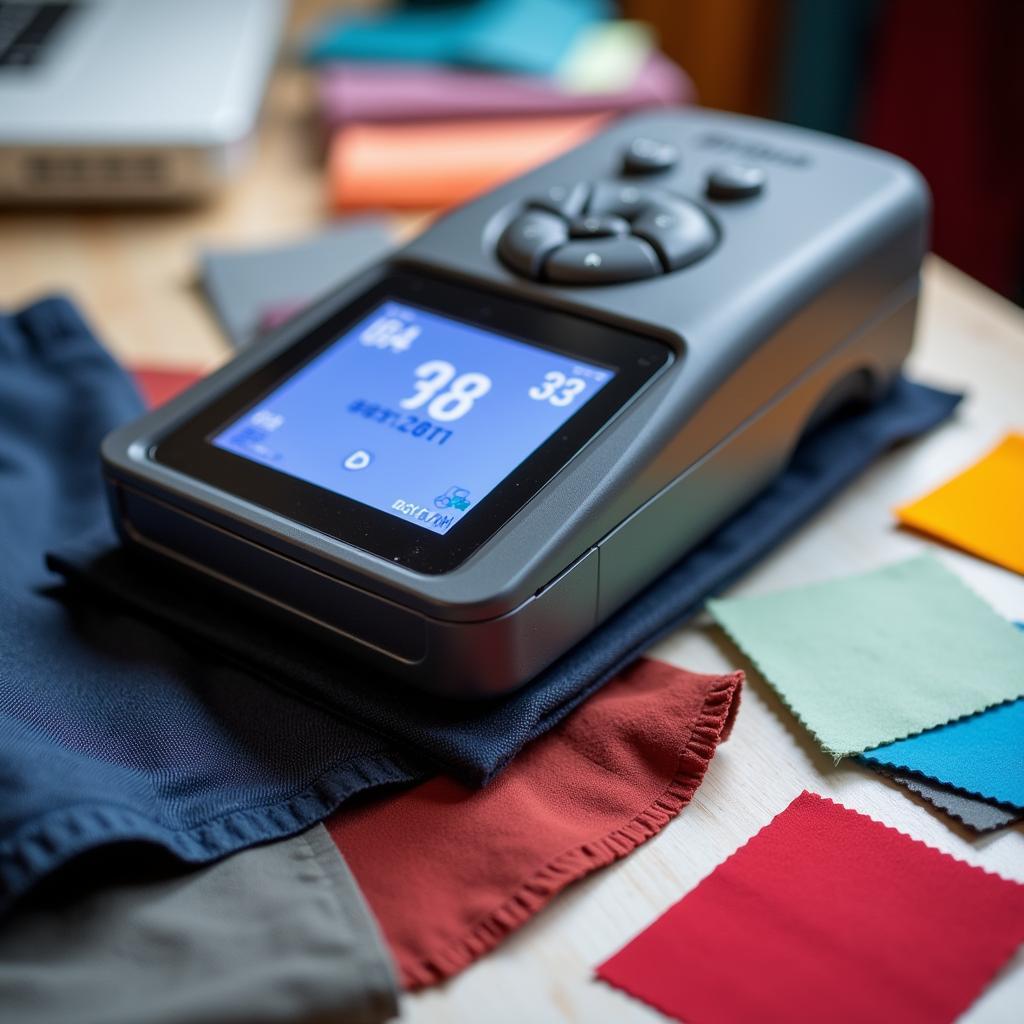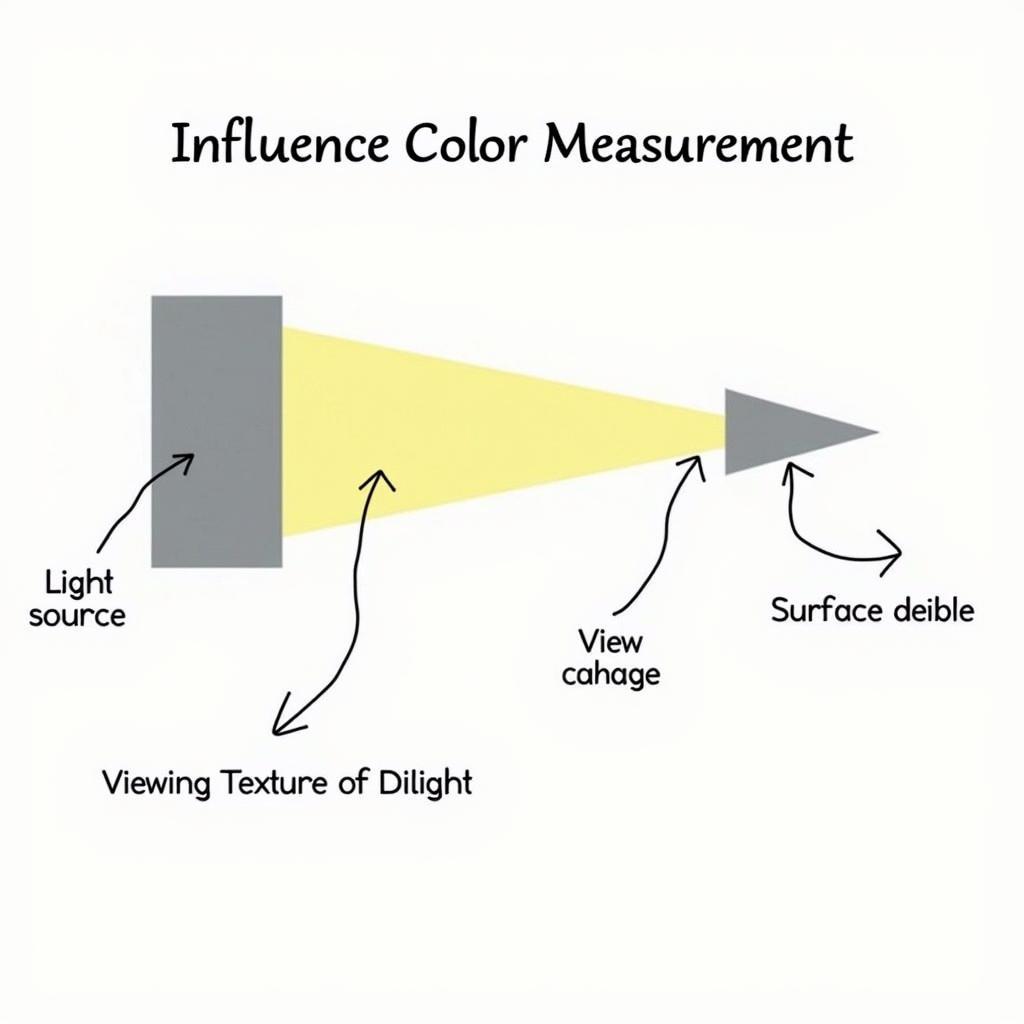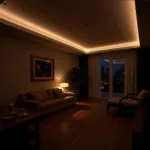Understanding how to measure color is crucial for achieving consistent and accurate results in various applications, from graphic design and photography to painting and textile production. Whether you’re a professional or a DIY enthusiast, precise color measurement ensures that your final product matches your vision. This comprehensive guide will explore different methods and tools for measuring color, helping you navigate the fascinating world of colorimetry. Let’s dive in and discover how to accurately quantify and reproduce the colors you desire. Want to learn how to measure hair color and developer? Check out this useful guide: how to measure hair color and developer.
Understanding Color Measurement Basics
Color, as we perceive it, is the result of light interacting with an object. Different objects absorb and reflect different wavelengths of light, resulting in the appearance of various colors. To measure color accurately, we need to quantify these reflected wavelengths. This is where colorimetry comes into play. Colorimetry involves using specialized instruments and standardized systems to objectively measure and define color. It removes the subjectivity of human perception and provides a consistent framework for communicating and reproducing color.
Methods for Measuring Color
Several methods exist for measuring color, each suited for different applications and levels of precision.
Spectrophotometry
Spectrophotometry is considered the most accurate method for measuring color. A spectrophotometer analyzes the light reflected or transmitted by an object across the entire visible spectrum. This data is then used to create a spectral reflectance curve, which provides a detailed fingerprint of the color. This method is widely used in industries where precise color matching is critical, such as printing, paint manufacturing, and textile production.
 Spectrophotometer Measuring Color
Spectrophotometer Measuring Color
Colorimetry Using a Phone
While not as precise as spectrophotometry, using your phone’s camera in conjunction with specific apps can provide surprisingly accurate color measurements. These apps utilize the phone’s camera sensor to analyze the color of an object and provide data in various color spaces. This method is particularly useful for quick color checks in the field or for hobbyists who need a more affordable solution. Learn more about using your phone: how to measure color temperature with phone.
Color Matching Systems
Various color matching systems, such as Pantone and RAL, provide standardized color libraries with assigned numerical or alphanumeric codes. These systems are commonly used in graphic design, printing, and manufacturing to ensure consistent color reproduction across different media and production runs. While not a direct measurement method, color matching systems offer a practical way to communicate and specify color.
What Tools are Used to Measure Color?
Several tools facilitate accurate color measurement. Beyond the spectrophotometer, colorimeters offer a more portable and affordable option for capturing color data. These devices measure the reflected light at specific wavelengths, providing a numerical representation of the color. For those working with printed materials, densitometers are used to measure the density of ink, which is directly related to color intensity. You might find this helpful: how to measure developer for hair coloring.
Factors Influencing Color Measurement
Several factors can influence the accuracy of color measurement. The light source illuminating the object is crucial. Different light sources emit different spectral distributions, affecting how the object reflects light and therefore the measured color. The viewing angle can also affect color perception and measurement. Finally, the surface texture of the object plays a role, as rough surfaces scatter light differently than smooth surfaces.
 Factors Affecting Color Measurement
Factors Affecting Color Measurement
How Do I Measure Color Temperature?
Color temperature is a measurement in Kelvin (K) that indicates the warmth or coolness of a light source. Lower color temperatures (e.g., 2700K) are associated with warm, yellowish light, while higher color temperatures (e.g., 6500K) appear cooler and bluer. Specialized color temperature meters are used to measure this property accurately.
Conclusion
Knowing how to measure color is essential for achieving accurate and consistent color reproduction. By understanding the different methods and tools available, you can choose the best approach for your specific needs. Whether you’re a professional in a color-critical industry or a hobbyist looking to perfect your craft, mastering the art of color measurement unlocks a world of creative possibilities. Looking for information on colored printing costs? Look no further: how much is colored printing.
FAQ
- What is the most accurate method for measuring color? Spectrophotometry.
- Can I use my phone to measure color? Yes, with specific apps.
- What is color temperature? A measurement of a light source’s warmth or coolness in Kelvin.
- What are Pantone and RAL? Standardized color matching systems.
- Why is light source important in color measurement? Different light sources emit different spectral distributions, affecting color perception.
- What is a densitometer used for? Measuring ink density in printed materials.
- How does surface texture affect color measurement? Rough surfaces scatter light differently than smooth surfaces.
Need more information about measuring in color mixing bowls? Check out this article: how to use hair color mixing bowl measurements.
Situations that lead to frequently asked questions:
- Inconsistency in color across different devices or prints. This often leads to questions about accurate color measurement and calibration.
- Difficulty matching colors from real-life objects to digital representations. This raises questions about different color spaces and measurement tools.
- Uncertainty about the correct color temperature for specific applications. This prompts inquiries about color temperature meters and their usage.
Other helpful articles and questions:
- How to calibrate a monitor for accurate color display?
- What are the different color spaces used in digital imaging?
- How to choose the right light source for color evaluation?
Need Assistance?
Contact us at Phone: 0373298888, Email: [email protected] or visit our address: 86 Cầu Giấy, Hà Nội. Our customer service team is available 24/7.

